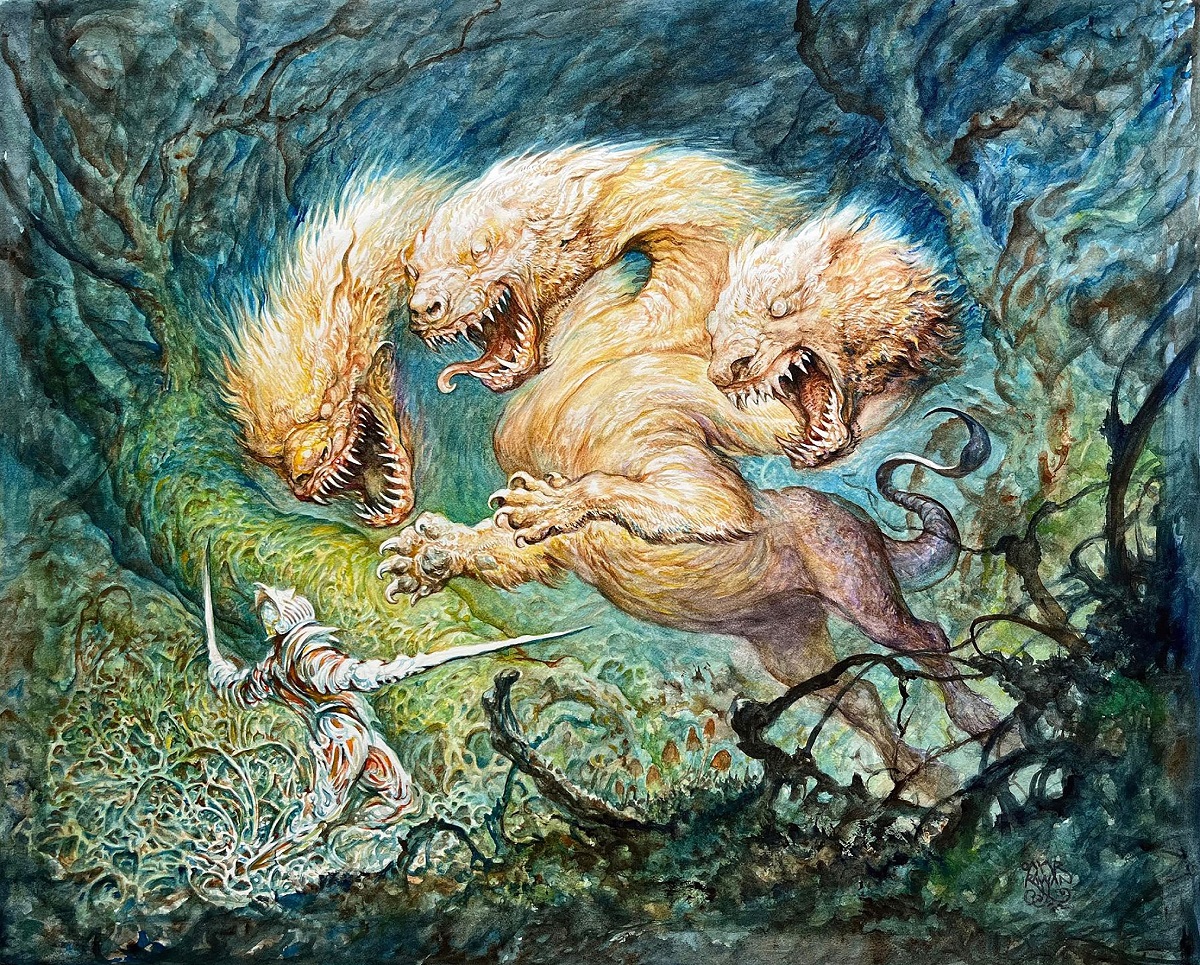Last month’s MagicCon Philadelphia played host to a bevy of panels, but perhaps none more anticipated than the First Look at this Spring’s new expansion, March of the Machine. The panel, which is now available in its entirety, set the stage for what’s coming to Magic as the influence of Elesh Norn and Phyrexia spreads through the Multiverse.
Amongst all the excitement of those things to come, something in particular stuck out to me (just like with JDB, which he has written about over at Hipsters of the Coast today). That was the Multiverse Legends subseries, which will appear with the set and associated Secret Lairs.
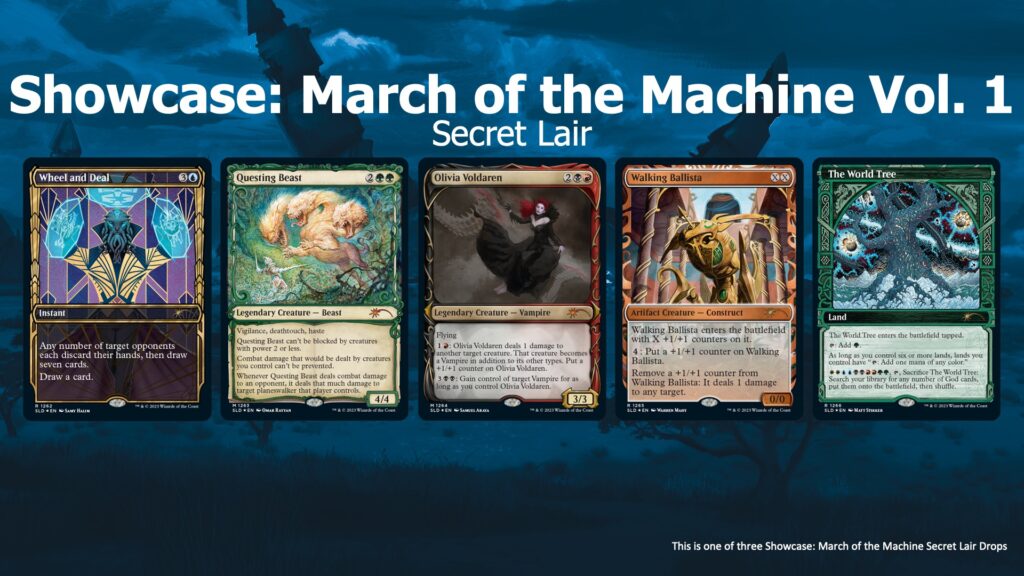
According to the First Look article, Multiverse Legends is a combination of new cards within the set, alongside a non-Standard-legal bonus sheet (like the Retro Artifacts of The Brothers’ War, or the Strixhaven Mystical Archives) that places characters from Magic in the Booster Fun showcase frame treatment of their home plane.
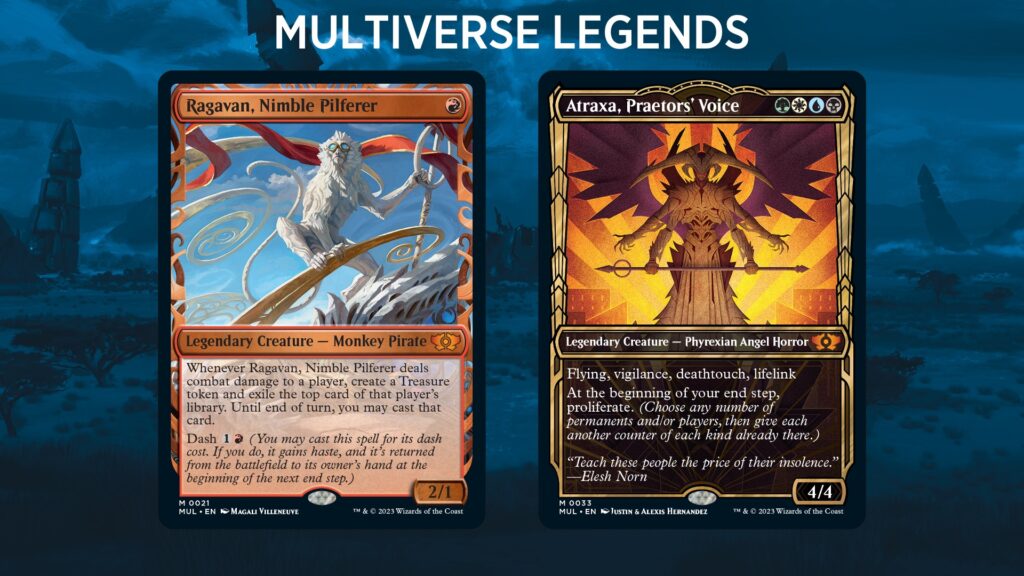
This will be a mash-up for the ages, taking what should be incredibly popular cards, setting them in some of Magic’s most beautiful and innovative frames, and telling origin stories from across the worlds of Magic: The Gathering.
Frame of Reference
As excited as I am, it does beg the question: “Just how important is the frame on a Magic card?” Frames are something I’ve written about on occasion, from the first time one knocked my socks off to the retro resurgence of a few years ago. I look at an overwhelming amount of artwork on a weekly basis, and oftentimes, it’s within the context of the card frame. How much does the frame influence those opinions and decisions that make up my articles?
It turns out, perhaps more than I previously thought; it just took seeing all those different cardboard confines together in one image to make my wheels spin, a silent sentiment of “Ain’t that a frame!” I want to take this opportunity, on the precipice of what will be a deluge of different frame printings, to explore this moment in time in my own brain, and see if I can explain it.
Framing 25 Years of Magic
Let’s go way back first, to the first time I’d even really considered the card frame. Five years ago, before I’d even started writing about Magic art, Sam from Rhystic Studies did a video on Frames, what they are, how they changed over time, and ultimately how they have influenced the game.
It has been a steadfast inspiration for my considerations in other writing, and I think it provides a good backbone for what I’m going to talk about. Pop over and give it a watch, if not before, definitely after; I think you’ll really enjoy it.
Framing Original Art
From that video, we move forward only a bit. Some of my earliest articles had dedicated sections about framing, but not about cards. The importance of a frame to a Magic artwork is not relegated only to card size. And it was my experience in framing original artwork in my collection that spurred John Dale’s suggestion of the topic, and ultimately my inspiration to explore this further. We head down memory lane to one of my earliest artwork acquisitions, and one of the fastest framing decisions I’ve ever made.
In 2018, I purchased the original artwork for Izzet Signet by Raoul Vitale from another original Magic art collector. It came in a very simple, but thick, gaudy, and bright gold frame.
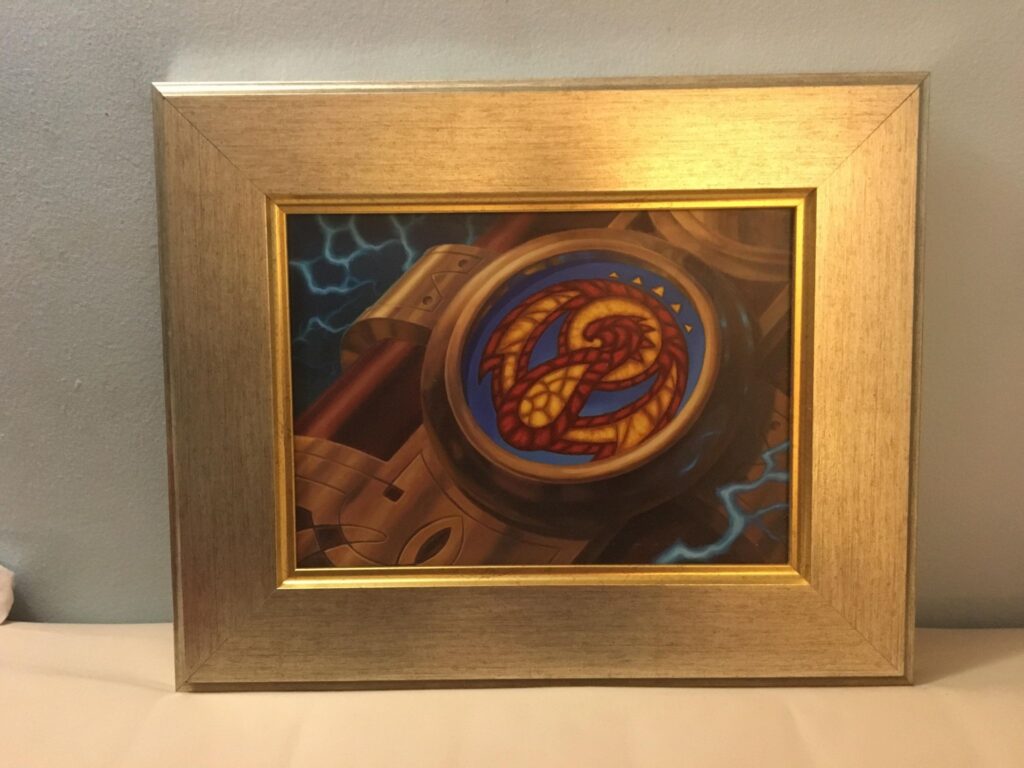
It lived in this frame only for a few weeks, until I had a chance to take it to my friendly local frame shop. Once there, my framer Lou worked her magic. In the front of the shop, she found a perfect outside moulding in an oil-rubbed bronze and deep scoop. But heading deep into the back, she unearthed a filet that evokes the very lightning of the Izzet, and adds a bit of blue to the package to emphasize the bright colors of the work itself.
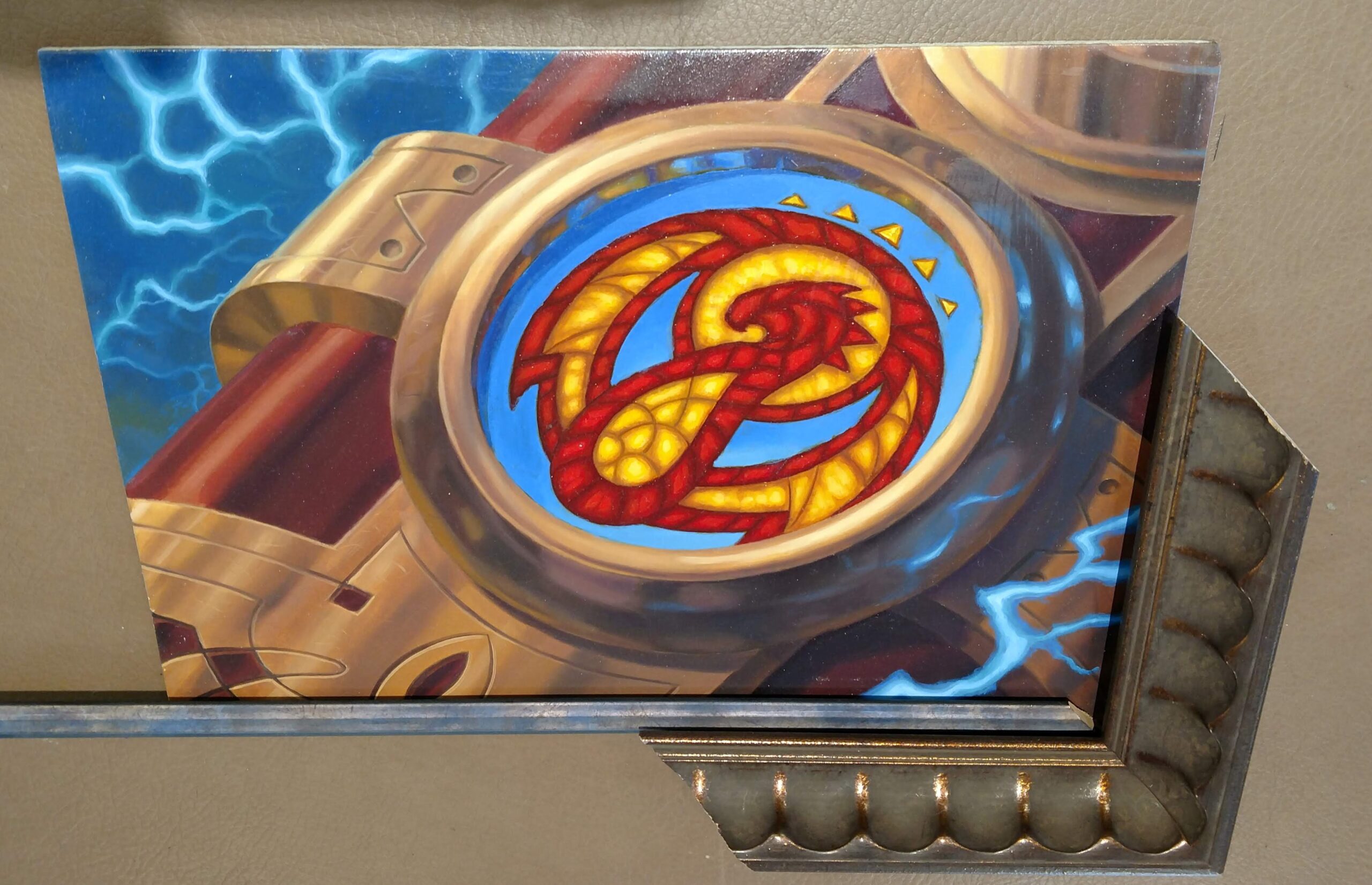
When Lightning Strikes
It was a long sold-out design that she had kept just a bit of for the right project, and now was its time to shine. She told me once when I first started visiting: “People come in all the time with artwork, and they’re looking for the right frame. I spend my time with all these mouldings, and I’m looking for the right artwork for each of them.”
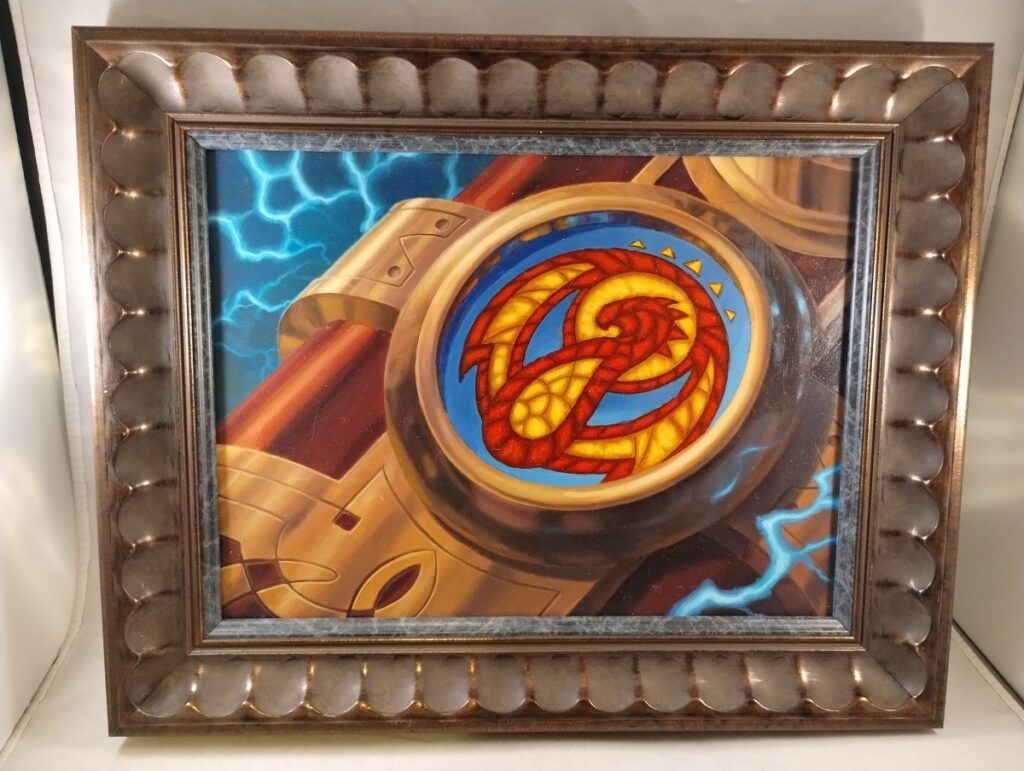
The result was an entirely transformed artwork. It hangs on the wall as if it would in an Izzet chemister’s workshop, a protected artifact that exemplifies the ideals of the guild, rather than a piece of contemporary artwork. This is always my goal in framing, to create the feeling a piece hangs on the plane itself. It turns out that this is the exact quality that makes these aforementioned showcase frames so special, and why they resonate so strongly.
Looking Closely: A Frame From the Past
The Throne of Eldraine Storybook Showcase frame was not the first time that Magic experimented with different frames. In fact, the Zendikar Expeditions, Kaladesh Inventions, and Amonkhet Invocations all came before, in what was called the Masterpieces series (Ixalan, too, was to have these called Explorations, but this line was canceled before production). Eldraine was the first egalitarian Showcase, where cards at all rarities were printed into this exciting new housing, and a big contributor to my falling deeper in love with Magic art. I collected this subseries like I’ve never done with Magic before. They were different, they were beautiful, and they brought a lot of long-awaited artists into the fold of Magic, and even a few folks back.
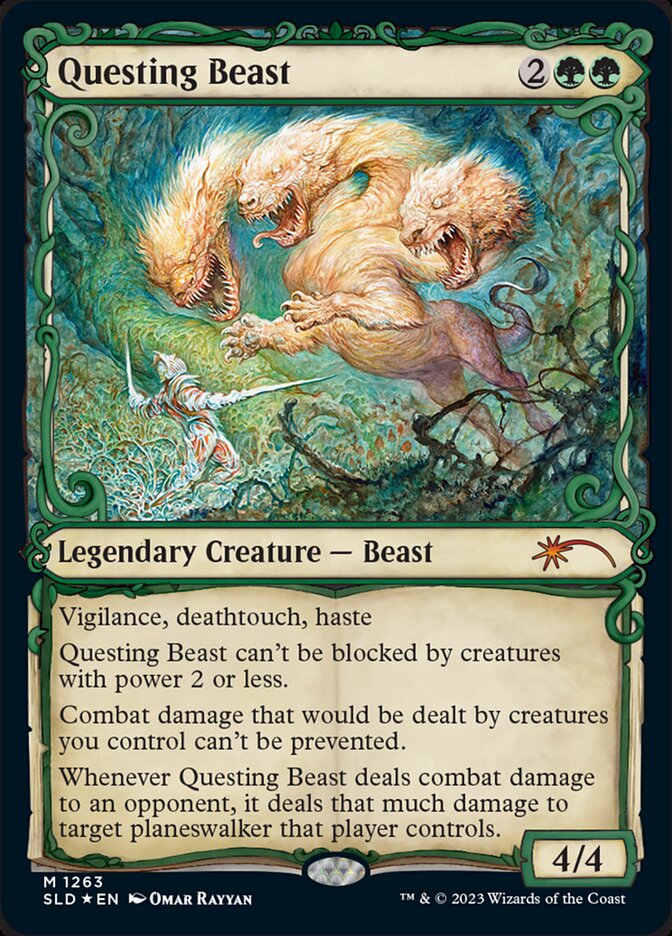
As a part of the March of the Machine previews, we received this absolutely phenomenal Questing Beast by Omar Rayyan, set in its thematic showcase frame. Eldraine was Rayyan’s return to the game after more than a decade, and to see his artwork in this frame again is not only a bit of pre-COVID nostalgia, but also a trumpet blast that he’s here again, and to stay for good this time. One of the most powerful and popular creatures of the set is now at home where it belongs, the frame of its plane.
Looking Closely: A Frame in the Future
So we know Multiverse Legends brings back all sorts of frames from cards home planes, but what about the title card of John Dale’s article over on Hipsters, Ghalta and Mavren?
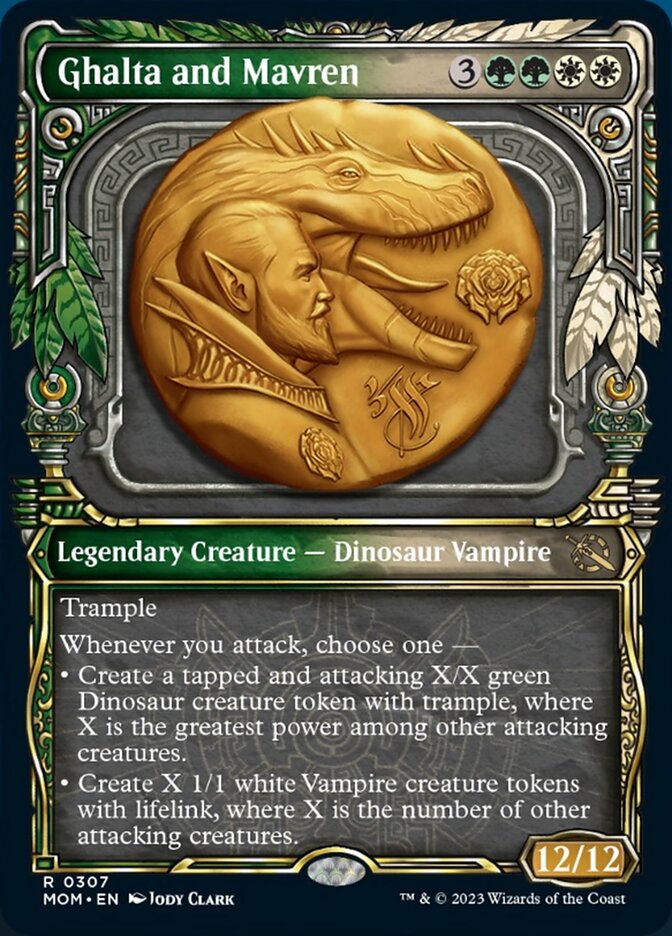
Have you seen that frame before? I sure haven’t. As I mentioned, Ixalan had its own Masterpiece series slated for production like those sets before it, but it was ultimately scrapped before printing and those card artworks used elsewhere. The same Fandom wiki article covers a handful of the missing cards that might have appeared framed as above (though there are many more hiding in plain sight that I can’t talk about). I’m wildly curious. Is the frame we see an age-old design that never saw the light of day, or is it something created brand-new so that Ixalan can have its time in the sun with this series too? Maybe we’ll get that answer from Wizards of the Coast (WotC), or maybe it’ll be lost to the design history books deep within the halls of Renton.
Regardless, I can’t wait to see what else ends up in the lost frame of Ixalan. Make sure you read John Dale’s piece to learn about the legendary artist they’ve tapped to create this version, Jody Clark. He’s not new to Magic, but this is the first time he received a brief to “do what you do best.”
Wrapping Up
Frames are amongst the simplest elements of the Magic card, but as they evolve, they continue to become the unsung heroes that Magic has only recently begun to embrace. As I was researching this article, I came across an old report from Christie’s auction house, written by Emma Crichton-Miller, that talks about “What Goes Around,” and just how important frames are to the larger art world. I’ll end with this parting thought from her article; think of it in the context of what we’ve talked about, and how frames emphasize your experience with Magic: The Gathering.
Let that simmer, and consider just how important frames are the next time you crack a pack.

